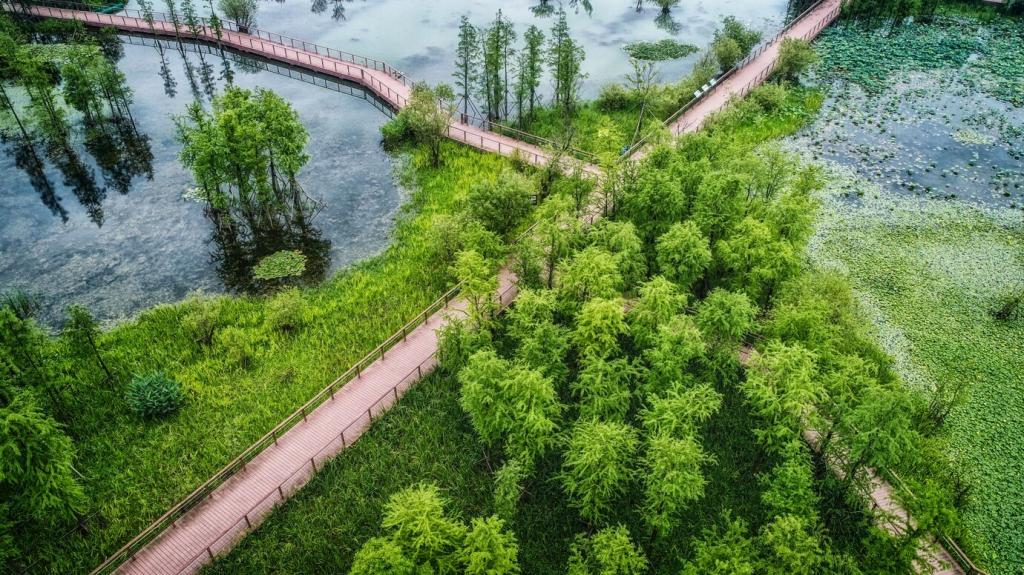Organic Lawn Alternatives
Organic lawn alternatives offer environmentally-friendly and low-maintenance solutions for homeowners seeking to reduce their ecological footprint and cultivate a healthier, more sustainable outdoor space. These alternatives substitute conventional turf grass, which often requires significant chemical inputs, mowing, and watering, with options that are equally attractive but far kinder to local ecosystems. By exploring organic lawn alternatives, you can enhance soil health, support native wildlife, and reduce your dependency on synthetic fertilizers and pesticides—all while enjoying a beautiful landscape tailored to your personal style and environmental values.
Native Groundcovers
Creeping Thyme
Creeping thyme is a hardy, mat-forming perennial that thrives in poor soil and full sun, requiring little care compared to conventional grass. Once established, this aromatic herb forms a dense, soft carpet of tiny leaves and delicate flowers, providing visual appeal and attracting pollinators like bees and butterflies. Creeping thyme tolerates light foot traffic, making it suitable for pathways or play areas, and rarely needs mowing or fertilization. Its drought tolerance makes it a practical choice for eco-friendly landscaping, especially in regions prone to water scarcity. Replacing portions of a lawn with creeping thyme reduces maintenance chores and chemical use, helping create a thriving, wildlife-friendly landscape. Its fragrant foliage also adds sensory interest to your garden.
Moss Lawns
Moss lawns represent a serene and low-maintenance alternative to traditional grass, particularly in shady or damp locations where turf struggles. Moss requires neither regular mowing nor fertilizing and has minimal water needs once established. Since moss plants absorb nutrients and moisture directly from the air, they help maintain soil stability and reduce water runoff. Furthermore, moss traps dust and pollutants, contributing to cleaner air around your home. The rich green hue and velvety texture of a moss lawn offer visual elegance and a calming atmosphere, making it ideal for tranquil garden environments. Choosing moss as a groundcover also supports microfauna, fostering a mini-ecosystem in your yard.
Clover Lawns
Clover lawns, especially those featuring white Dutch clover, are gaining popularity for their resilience and sustainability. Clover fixes atmospheric nitrogen, enriching the soil naturally and reducing the need for artificial fertilizers. It stays green during dry periods and is highly resistant to pests, eliminating the need for chemical pesticides. Clover’s flowers attract bees and other beneficial insects, boosting pollinator populations in urban and suburban areas. Soft underfoot and tolerant of moderate traffic, clover can serve as a full lawn replacement or blend with turf for a mixed meadow effect. Its self-healing properties ensure that bare spots fill in quickly, maintaining a lush appearance throughout the growing season.
Wildflower Meadows
Wildflower meadows are vibrant, ever-changing landscapes teeming with native blooms and beneficial insects. By planting a carefully selected mix of wildflowers suited to your region, you create a self-sustaining ecosystem that offers continuous visual interest and changing colors throughout the year. These meadows require minimal intervention after establishment—no regular mowing or fertilization—and provide crucial habitats for bees, butterflies, and birds. Wildflower meadows also reduce stormwater runoff and stabilize soil, preventing erosion. Embracing a wildflower meadow lawn replaces the monoculture of grass with a thriving tapestry of nature while reducing time, cost, and environmental impact of maintenance.
Prairie Grasses
Prairie grasses are foundational species in meadow lawns, lending both structure and resilience to your landscape. Varieties such as little bluestem, switchgrass, and sideoats grama are deeply rooted, drought-tolerant, and require no chemical inputs to flourish. These grasses create a dynamic backdrop, moving gracefully in the wind and providing year-round visual interest. Prairie grasses sequester carbon, improve soil permeability, and help control erosion by anchoring the ground. Their presence encourages a diverse community of insects, birds, and small mammals, turning your yard into a thriving ecosystem. Opting for prairie grasses as a lawn substitute supports local flora and fauna and reduces maintenance needs dramatically.
No-Mow Grass Mixtures
No-mow grass mixtures combine slow-growing, fine-bladed grass species that form a dense, soft sward requiring little intervention beyond occasional trimming. These blends are designed for low nutrient and water requirements, making them ideal for areas with restricted resources or hands-off gardeners. No-mow lawns look lush and green but seldom exceed six inches in height, maintaining a tidy appearance without frequent mowing. They resist most pests and diseases naturally, minimizing the need for chemical treatments. No-mow mixtures are an easy upgrade from high-maintenance turf, offering an organic, environmentally-responsible alternative that fits seamlessly into modern sustainable landscaping.
Permeable Hardscapes
Permeable Paver Walkways
Permeable paver walkways combine practicality with environmental stewardship by providing a stable, attractive surface that manages stormwater efficiently. Unlike conventional solid surfaces that shed water, permeable pavers are installed with gaps or porous materials that let rainwater seep through into the ground below. This design reduces puddling, prevents soil erosion, and helps filter pollutants before they reach storm drains. These walkways are especially useful in high-traffic zones where a traditional lawn may struggle to stay green. Installing a permeable paver path or patio creates inviting outdoor living areas while maintaining the natural hydrology of your landscape and decreasing the risk of flooding.
Gravel and Stone Areas
Gravel and stone areas offer a versatile, low-maintenance option for spaces where grass fails to thrive or is unnecessary. These surfaces can be used for seating zones, fire pits, or pathways, providing both texture and visual structure in your yard. Since gravel allows water to pass through easily, it helps prevent erosion and encourages healthy plant roots by keeping soils aerated. Unlike lawns, gravel landscapes never need mowing or fertilizing, making them a hassle-free option. Stone and gravel are available in a range of colors and sizes, allowing you to customize your landscape design without the environmental costs of synthetic turf or sod installation.
Mulched Gathering Spaces
Mulched gathering spaces create comfortable, informal areas for relaxation or play without relying on grass. Organic mulch, such as wood chips or bark, adds a natural component to your landscape while helping retain soil moisture and suppress weeds. Mulch areas are ideal for playgrounds, picnic spots, or under trees where grass struggles, offering a soft surface that breaks falls and stays cool in hot weather. Over time, mulch integrates into the soil, enhancing fertility and supporting healthy plantings nearby. Converting sections of your lawn to mulched spaces provides an organic, attractive, and practical alternative that thrives without chemical inputs or frequent upkeep.
Previous slide
Next slide

Habitat Lawns for Wildlife
Pollinator Patches
Pollinator patches are specialized plantings designed to attract and support bees, butterflies, and other vital insects. These mini-meadows feature nectar-rich native flowers, dense groundcovers, and grasses that offer shelter and breeding sites. By incorporating pollinator patches into your lawn, you counteract habitat loss and bolster populations of species imperative to fruit and vegetable production. Such areas demand little maintenance beyond seasonal trimming, thrive without chemicals, and provide bursts of color and movement from spring through fall. Establishing a pollinator patch in your yard not only benefits wildlife but also enhances the beauty and productivity of surrounding gardens.
Wildlife Corridors
Wildlife corridors are intentionally planted strips or clusters of native shrubs, perennials, and grasses that link sources of food and cover throughout your property. These corridors allow birds, insects, and small mammals to travel safely between feeding and nesting sites while avoiding predators and hazards. Replacing lawn sections with native plantings creates vital pathways within urban or suburban landscapes, supporting species richness and genetic diversity. Thoughtfully designed wildlife corridors also stabilize soils, manage rainwater, and reduce the need for mowing or chemical treatments. By prioritizing habitat connectivity, your lawn becomes a living bridge for biodiversity throughout your neighborhood.
Bird-Friendly Plantings
Bird-friendly plantings include fruiting shrubs, seed-producing grasses, and dense thickets that offer food, shelter, and nesting sites for a variety of bird species. By converting turf areas to diverse plant groupings, you provide year-round resources that help resident and migratory birds thrive. Native berries, nuts, and seeds sustain birds through each season, while thick cover offers protection from predators and harsh weather. Bird-friendly plantings not only enrich your landscape with lively song and color but also contribute to insect control and seed dispersal. Fostering a bird habitat in your yard supports local ecosystems and celebrates the joy of wildlife observation.
Low-Water Xeriscapes
Succulent gardens feature an array of unique, fleshy-leafed plants that store water and thrive in dry, sunny conditions. These gardens are visually captivating, offering architectural shapes, varied colors, and seasonal blooms rarely found in traditional lawns. Once established, succulents require infrequent watering, are resistant to pests, and display remarkable drought tolerance. By substituting sections of grass with succulent plantings, you create vibrant, low-maintenance focal points that support pollinators without the need for irrigation or fertilizers. Succulent gardens showcase the beauty and diversity possible in a water-wise, organic landscape.

Living Mulch Lawns
Dwarf yarrow provides a tough, attractive living mulch alternative that forms a spreading mat of silvery-green foliage and delicate white-yellow flowers. Suited to sunny, dry conditions, yarrow suppresses weed growth and requires only occasional mowing or cutting back. Its deep roots enhance soil structure and draw moisture from deep within the ground, making it drought-resistant and ideal for low-input landscapes. Yarrow is resilient to foot traffic, supports pollinators, and adds a subtle, early summer bloom to your lawn replacement. By switching to dwarf yarrow, you create a self-sustaining groundcover that reduces maintenance and chemical reliance.

Environmental Impact
Switching to organic lawn alternatives drastically reduces chemical runoff and pesticide use, which can harm waterways, wildlife, and soil health. These landscapes rely on native plants and organic methods, creating ecosystems rich in beneficial insects and birds. They improve air and water quality by minimizing emissions from mowing, irrigation, and fertilization. Choosing organic options helps combat climate change through increased carbon sequestration, healthier soil biology, and reduced fossil fuel consumption. Your property becomes a force for ecological restoration, helping recover the balance lost to conventional lawn regimes.
Resource Conservation
Organic lawn alternatives are designed to use significantly less water, energy, and synthetic fertilizers. Native plants and drought-tolerant species require minimal irrigation and maintenance, helping conserve freshwater resources and lower your utility bills. Reduced mowing and input needs save energy and labor, freeing up your time for activities you enjoy. By opting for a more resilient landscape, you also buffer your yard against local climatic extremes, creating a self-sustaining outdoor environment that thrives with minimal intervention.
